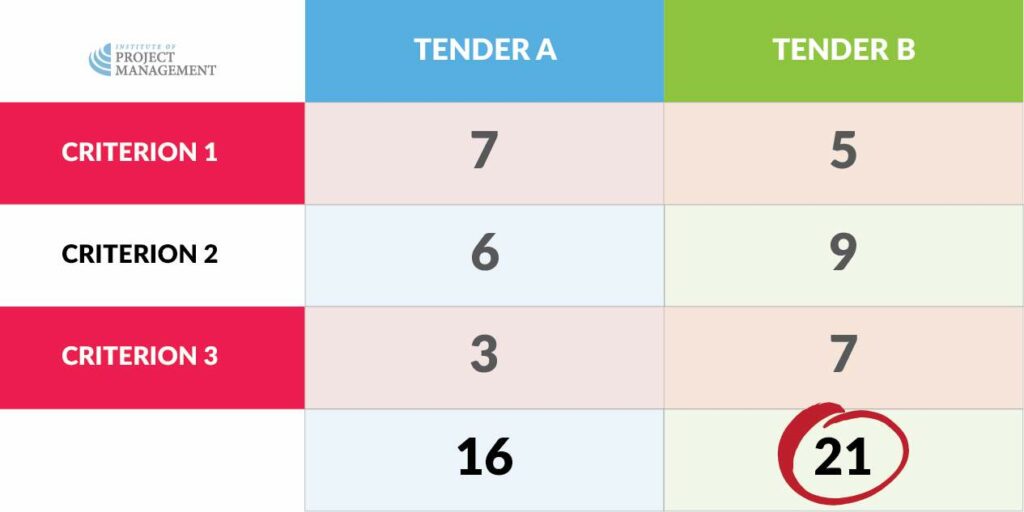The tender process
Tendering is the process of making an offer, bid, or proposal – or expressing interest in response to an invitation – to supply goods and/or services to a project.
Organizations will then select an offer from the pool of bids or responses (the tenders) that meets their needs and provides the best value for money.
Tender request documents – also referred to as invitations to tender, Requests for Tender (RFT), and Requests for Proposal (RFP) – outline the requesting organization’s needs.
These documents also explain the particular requirements, criteria, and instructions to be followed.
Tenders are usually advertised widely to offer opportunities to many suppliers, encourage competition, and provide a greater pool of offers to select from.
Interested suppliers will then prepare a tender – the documents that outline the offer that they are making.
Each tender will include pricing, schedules, and eligibility for the project or procurement.
They will also outline their advantage over competitors, as well as provide information on qualifications, competencies, and experience.
The submitted tenders are then evaluated against defined criteria, not unlike the criteria used to evaluate alternatives in the business case.
You will often use the multi-criteria framework (albeit with different criteria) to decide on the best option.

The tender process should be conducted fairly and honestly and in a manner that is free from bias or favour.
The offer that best meets all the requirements outlined in the request and provides the greatest value for money should win the contract.
Tender documentation
You should prepare these documents and make openly available to every potential tenderer.
1. Conditions of tender
The conditions of tender set out, among other things, the date the tender closes, what format the tender documents should be lodged in, and the process by which tenderers can request further information.
Format consistency greatly aids the evaluation process by allowing like-for-like comparison of the tenders.
It is also important that if one potential tenderer asks a question, then all potential tenderers are informed of the answer.
This ensures no one tenderer gains an insight that unfairly advantages them over their competitors.
The conditions of tender may also stipulate the ‘legalities’ of tender participation, including the legal jurisdiction, intellectual property rights, liabilities, and any ethical rules that will govern the tender process.
2. Statement of work
The statement of work describes the resources (goods or services) required by the project.
In many respects, this will resemble a project charter and contain information such as scope inclusions/exclusions, time frame for delivery, indicative cost, and any assumptions or constraints.
A balance must be struck between providing sufficient detail to ensure project requirements are met and giving tenderers enough freedom to provide creative and innovative solutions.
Therefore, these deliverables may be subject to negotiation with the preferred tenderer.
3. Conditions for participation
The conditions for participation limit the number of businesses that may be eligible to tender for the work.
If, for example, the procurement demands specialist knowledge or resources, it might be prudent to limit potential suppliers to those with the proven expertise to deliver the work.
Such suppliers might be drawn from a panel of pre-approved or preferred suppliers.
Although limiting the number of tenderers reduces competition, it may significantly simplify the management of the tender process.
4. Essential requirements
Essential requirements extend the conditions of participation by listing certain non-negotiables that the successful tenderer must either have or provide.
These might include things like certifications, insurances, and references.
Tenders that do not meet these criteria should be disqualified from consideration.
Desirable requirements – things that might be considered favorable but are not critical to performance – may also be listed.
5. Evaluation criteria
Tender specifications should be accompanied by information about the most important requirements and how tender bids will be evaluated according to these requirements.
The evaluation criteria are not a part of the statement of work but must be part of the information package sent to potential tenderers to give them all the same opportunity to respond to your priorities.
6. Proposed contract
A draft copy of the contract the successful tenderer will be expected to enter into should also be attached.
Although specific terms may be subject to negotiation, this gives tenderers clarity about the legal nature of the relationship they are potentially entering into.
7. Information for suppliers
Preparing a tender response can be quite an expensive process for potential suppliers, with no guarantee of reward.
To encourage potential tenderers to go to that effort, you want to be as comprehensive as possible in the information you give them.
This is the place to give them that detail.
You should nevertheless be careful not to overcomplicate the process for tenderers.
The submission requirements for a relatively inexpensive, off-the-shelf item should, therefore, be much more streamlined than for the provision of specialist services on a long-term basis.




